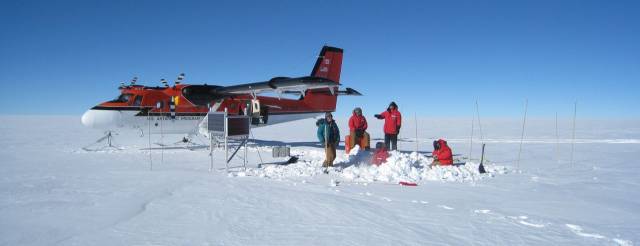Polar Programs

PASSCAL currently supports approximately 60 experiments per year worldwide, with 5-10% currently funded by the National Science Foundation (NSF) Office of Polar Programs (OPP). Polar projects commonly require a level of support that is several times that of seismic experiments in less demanding environments inclusive of very remote deployments (e.g. Tibet). In order to ensure OPP funded Antarctic projects the highest level of success, we have established a PASSCAL Polar Program and have secured funds from OPP to support new and ongoing experiments in Antarctica.
The primary focus of PASSCAL’s Polar support efforts are:
- Developing successful cold station deployment strategies.
- Collaborating with vendors to develop and test -55°C rated seismic equipment.
- Establishing a pool of instruments for use in cold environments.
- Building a pool of cold station ancillary equipment.
- Creating a resource repository for cold station techniques and test data for seismologists and others in the polar sciences community.
To better support Antarctic science, IRIS is investigating the establishment of a manned-as-necessary instrument center at McMurdo Station, Antarctica. The goal of this center would be to: test and vet equipment as it arrives on continent allowing events to field more efficiently; provide timely and cost effective training; offer easily reachable expert troubleshooting; afford on-continent instrument performance and data QC; aid with data backup and archiving; and make available installation support as required/requested.
In parallel with PASSCAL’s internal Polar support efforts, IRIS and UNAVCO have recently received NSF MRI (MRI 1) funding to develop a power and communications system for remote autonomous GPS and seismic stations in Antarctica. In January 2007, IRIS PASSCAL collaborated with UNAVCO to install the first MRI prototype test-beds at South Pole and McMurdo stations. These prototype stations are designed to test primary battery systems, the first cold rated broadband sensor, new digitizer firmware tuned for the cold, and specialized cold station enclosures.
- Home
- General Information
- Instrumentation
- Dataloggers
- Sensors
- All-In-One Systems
- Power Systems
- Field Procedures
- Controlled Sources
- Seismic Source Facility
- Magnetotelluric Systems at PASSCAL
- Ground Penetrating Radar
- Power and Memory Calculations Form
- Data Archiving
- Apply for a PI Account
- Experiment Scheduling
- Polar
- Important Hardware/Software Notes
- USArray
- Software


